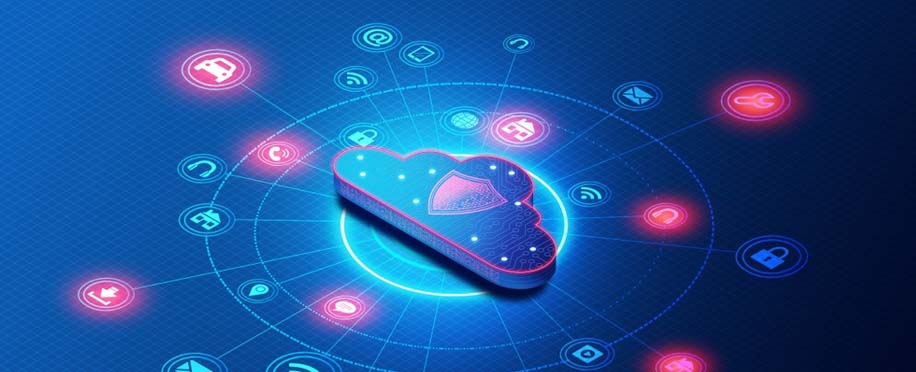Copyright © 2025 lpcentre.com All Rights Reserved. London Premier Centre For Training Ltd Registered in England and Wales, Company Number: 13694538
version: 3.0.1

Posted on : 8/4/2022, 6:30:12 PM
In the current information age, cybersecurity techniques have become of great importance, as everything we do in our lives is linked to the use of computers and the Internet.
The point here is that the risks involved in information management are not new. Still, the Internet has dramatically increased the opportunities, and threats companies face, creating new opportunities for fraud and theft.
So to protect your company's data, you need to have problem-solving skills and know the most common cyber attacks and how to stop them before they harm you. Therefore, this article will tell you about the 6 cybersecurity techniques that will help you manage risks in the information age.
Cybersecurity is the practice of defending information systems, computers, and data from malicious electronic attacks.
Companies must use cyber security to avoid penetration of their data and networks. This responsibility lies with the company's leader because it will be in danger if it does not have sufficient experience in leading and protecting it from electronic threats.
You can learn the basics of leadership Through Leadership and Management Training Courses Dubai.

Cyber security is divided into many categories, including:
It is one of the essential categories of cybersecurity because it is the practice of securing computer networks from intruders.
Cybersecurity protects data integrity against electronic threats, such as malware.
It focuses on keeping applications and programs free of threats aimed at hacking their data. It depends on the success of the data designed to protect the application.
Generally, cybersecurity provides security precautions as an application of cyber security in any field that enters the Internet.
In this case, information is stolen using e-mail, where messages are sent within messages with a trusted source as camouflage. The goal is to steal critical data, and these attacks are becoming more prevalent.
It is one of the most dangerous technologies where ransomware is designed to obtain money extortionately by hacking data and systems of devices and preventing access to them unless the money is paid. However, there is no guarantee of data recovery, even if money is paid, and this is one of the most common risks to systems and devices' data.
This type is one of the hacking methods, by clicking on malicious links or sources or downloading malicious applications, which enables the attacker to penetrate the device's system and access sensitive data stored on your device.
Usually, a solicitation method is used until the user clicks the link or downloads the app.
But how can systems and devices be protected from all these risks? The answer is through cyber security techniques that we will talk about below.
All systems and networks of the world are vulnerable to hacking by professional hackers and electronic attacks. Here lies the importance of measures addressing cyber intrusion and protecting data, systems, and networks.
The most significant danger companies face from the player and the parties supporting them, which usually target specific companies and institutions.
For these reasons, The cybersecurity system for institutions must be supported and strengthened, the cybersecurity capacity in companies must be raised, and it is necessary to delve well into cybersecurity to protect networks and data related to them. So here are some cybersecurity tools and techniques:
1. Antivirus software
There are many different forms of malware, which hackers use in their cyber attacks to penetrate devices and networks and spread within them.
Including viruses, spyware, and many others, but the presence of anti-virus programs contributes to identifying and addressing these dangerous programs. It may work to reduce damage to networks when accessing them.
2. Access control
When the attacker cannot access the network, the damage will not be significant, and anyone authorised to access it may also pose a risk; it is best to restrict user and resource access to the network. Here you have increased the security ratio of the network, which is your responsibility.
3. Data loss prevention (DLP) Technology
This technology assists in the good use of essential data, which the employee may misuse badly, and this exposes it to severe risk. It is essential to rely on DPL techniques and policies to get rid of this weak point in use, and this is what you will learn when studying the Fundamentals Of Data Analysis and storage.
4. Endpoint security
Unfortunately, there is no difference between personal computers and the devices that are used in business, and this has increased the possibility of hacking attacks on personal devices because of the lack of distinction between them, because the attacker may penetrate your personal computer, thinking that it is a commercial computer.
So; There has to be a protection to help distinguish the two, and that's what endpoint security does.
5. Intrusion prevention systems
An Intrusion Prevention System constantly scans network traffic to identify different types of attacks and stop them, as they rely on a database of known attacking methods.
6. Web Security
Web security protects the network comprehensively, and companies rely on it to add security when using the web's intranet, which helps prevent web pages from being used to hack the network.
These were the best practices and techniques in the field of cybersecurity, most of which work according to the artificial intelligence system and thus help organisations to detect and prevent network intrusions and to push operational digital information.